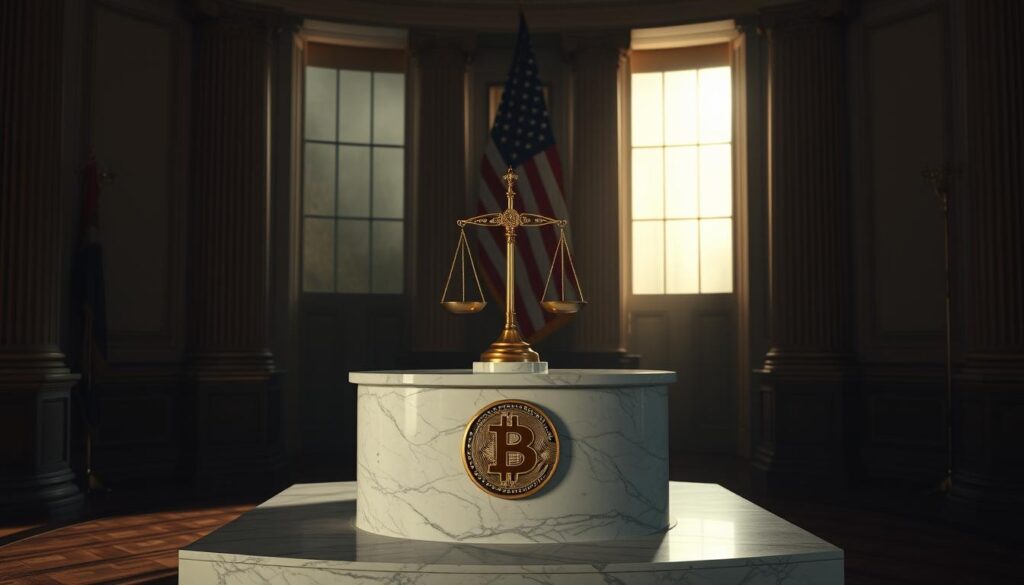Trump Bitcoin Reserve and the White House Summit
The Trump Bitcoin Reserve strategy is poised to become one of the most significant policy announcements in the history of digital assets. Scheduled for unveiling at the White House Crypto Summit on March 7, the initiative signals a dramatic shift in the United States’ approach to cryptocurrency.
According to early reports, the plan includes the creation of a strategic reserve built on Bitcoin, Ethereum, XRP, Solana, and Cardano. This move would mark the first time a U.S. administration formally integrates digital currencies into federal-level financial planning.
The proposal also floats the possibility of removing capital gains taxes on digital assets, a measure that could reshape investment incentives across the entire crypto ecosystem.
Why the Trump Bitcoin Reserve Matters
Stabilizing Markets with a Strategic Reserve
The Trump Bitcoin Reserve strategy is designed not only to diversify U.S. financial assets but also to stabilize volatile cryptocurrency markets. By holding a government-backed reserve, the administration hopes to dampen price swings and bolster investor confidence.
Historical parallels are evident. Just as the U.S. dollar’s value was once supported by gold reserves, Bitcoin may be positioned as a modern hedge against economic instability.
Tax Reforms and Investor Relief
The prospect of eliminating or easing capital gains taxes on digital assets could be a game-changer. For traders and long-term investors alike, this policy would significantly reduce financial friction in the crypto economy. While a complete removal of taxes may be unlikely, incremental reforms—such as tax exemptions for long-term holdings—are being actively discussed.
Investopedia and CoinDesk have both noted that reducing tax burdens could accelerate institutional adoption and push digital assets deeper into mainstream finance.
Trump’s Evolving Stance on Cryptocurrency
President Trump’s relationship with digital assets has been complex. Initially critical of Bitcoin, labeling it a tool for speculation and fraud, his stance has shifted toward strategic acceptance.
- Early skepticism: Trump often criticized Bitcoin’s volatility and lack of intrinsic value.
- Gradual recognition: By 2023, his administration had begun exploring crypto’s role in job creation and financial innovation.
- 2025 pivot: The proposed Trump Bitcoin Reserve underscores a pragmatic turn, reflecting the growing influence of the crypto industry on U.S. policy.
This evolution mirrors the global trend of governments reconsidering their positions as blockchain technology matures.
Potential Impacts on U.S. Monetary Policy
If implemented, the Trump Bitcoin Reserve could alter the very foundations of U.S. monetary policy.
Benefits:
- Enhanced financial stability
- Reduced dollar volatility
- Increased investor trust
- Economic growth through crypto adoption
Risks:
- Market manipulation concerns
- Disruptions to existing financial institutions
- Potential geopolitical friction with traditional economic powers
The Federal Reserve will play a decisive role in how this integration unfolds, balancing innovation with systemic stability.
Global Implications of the Trump Bitcoin Reserve
The announcement has already caught the attention of major economic powers such as China and the European Union.
- International adoption: Other governments may consider creating their own digital reserves.
- Geopolitical tension: Competition for blockchain dominance could accelerate.
- Financial disruption: Traditional currency markets may face new volatility as digital assets gain legitimacy.
The Trump Bitcoin Reserve could set a precedent, positioning the U.S. as a leader in digital currency policy—or igniting a new financial arms race among global powers.
Market Reactions and Investor Sentiment
Bitcoin’s price surged briefly after early reports of the plan, spiking from $85,000 to $95,000 before correcting. This volatility reflects both excitement and uncertainty.
Investors are split:
- Some see the Trump Bitcoin Reserve as a long-overdue acknowledgment of crypto’s legitimacy.
- Others warn of potential overreach, where government intervention distorts free markets.
Either way, the summit’s outcome will likely set the tone for crypto markets in 2025 and beyond.
Conclusion: Reshaping America’s Digital Future
The Trump Bitcoin Reserve represents more than a policy shift—it signals a redefinition of America’s financial identity. By integrating Bitcoin, Ethereum, Solana, Cardano, and XRP into a strategic reserve, the U.S. government is effectively recognizing digital assets as core components of the economy.
Whether this move stabilizes markets or sparks new volatility, one thing is clear: the U.S. has entered the digital asset arena at the highest level of governance. The coming months will reveal whether this bold experiment strengthens America’s financial future or exposes it to unprecedented risks.
FAQs on the Trump Bitcoin Reserve
What is the Trump Bitcoin Reserve?
The Trump Bitcoin Reserve is a proposed U.S. government strategy to hold Bitcoin and other cryptocurrencies as part of a national financial reserve.
Why is the Trump Bitcoin Reserve significant?
It marks the first formal integration of digital assets into U.S. financial policy, potentially reshaping markets and monetary stability.
How could the Trump Bitcoin Reserve affect taxes?
The plan includes discussions on eliminating or reducing capital gains taxes on crypto assets, which could incentivize broader adoption.
What are the risks of the Trump Bitcoin Reserve?
Risks include market manipulation, financial instability, and geopolitical pushback from other major economies.
How might global markets react to the Trump Bitcoin Reserve?
If successful, the plan could inspire other nations to adopt similar reserves, accelerating worldwide crypto integration.

